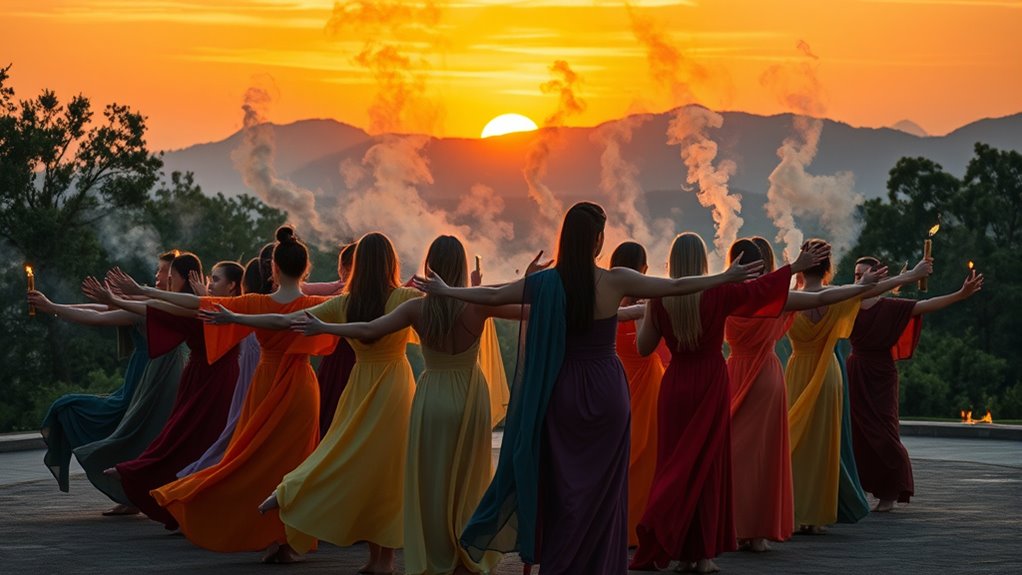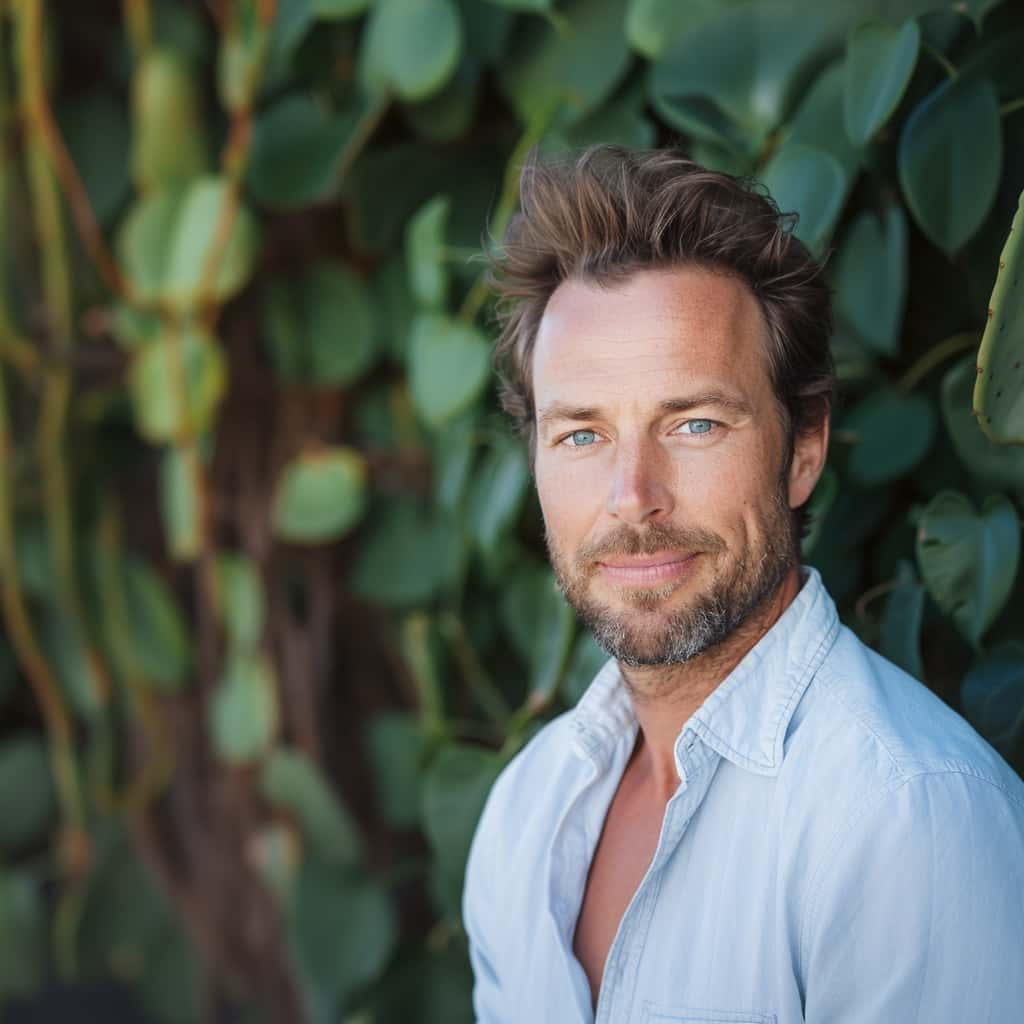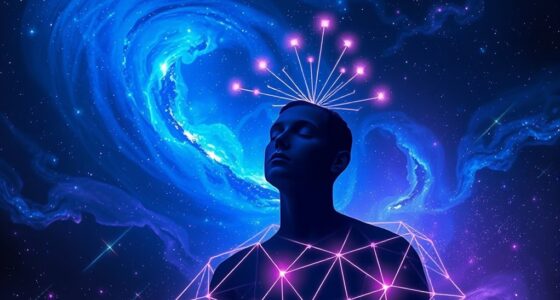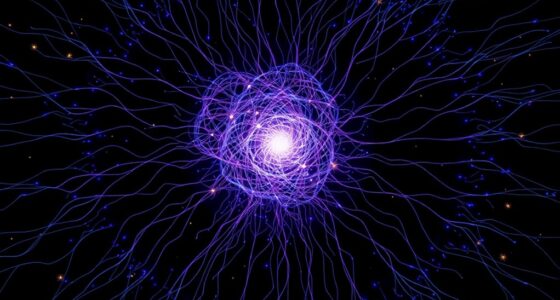When you participate in synchronized group rituals, your brainwaves and hormones align, creating a powerful sense of connection. Shared chants, movements, and rhythms help your neural activity become more coherent with others, boosting social bonds. Hormonal releases like oxytocin and endorphins enhance trust and happiness across the group. These biological processes foster unity, making collective rituals deeply bonding experiences. If you keep exploring, you’ll discover even more about how science illustrates the strength of shared human rituals.
Key Takeaways
- Neural synchronization occurs when brainwaves align through shared chants, movements, and rhythms during group rituals.
- Increased neural coherence enhances feelings of social bonding and collective identity among participants.
- Rituals induce hormonal releases like oxytocin and endorphins, promoting trust and emotional connection across the group.
- The combined neural and hormonal alignment strengthens group cohesion, trust, and empathy.
- These biological processes explain the universality and enduring nature of rituals in fostering social cohesion.
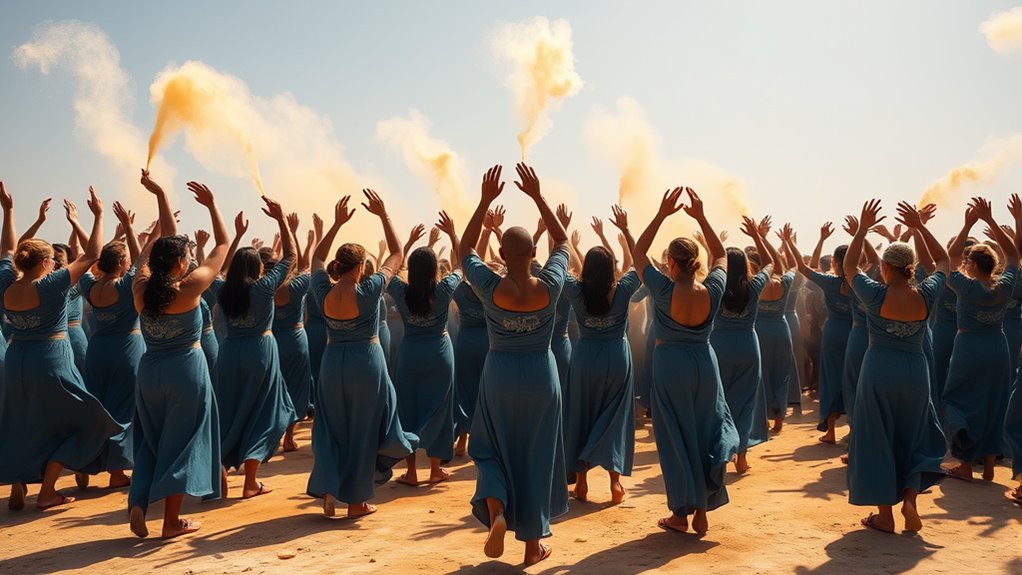
Synchronized group rituals have long fascinated researchers because they create a powerful sense of unity and shared purpose among participants. When you engage in these collective activities, your brain naturally begins to synchronize with others, a phenomenon known as neural synchronization. This process involves your brainwaves aligning in response to the rhythms, chants, or movements shared within the group. As your neural activity becomes more synchronized with that of others, you feel a deeper connection, a sense that you’re all moving together as one. This neural alignment isn’t just metaphorical; it’s measurable through EEG studies that show increased coherence among participants during synchronized rituals. The closer your brainwaves match those around you, the stronger your feeling of belonging and social bonding. Additionally, research indicates that neural synchronization can enhance emotional regulation and resilience during collective activities, further supporting social cohesion. Alongside neural synchronization, hormonal alignment plays an essential role in amplifying these feelings of connection. When you participate in group rituals, your body releases hormones like oxytocin and endorphins, which promote trust, bonding, and happiness. Interestingly, these hormonal responses are often synchronized across group members, reinforcing a collective emotional state. For example, shared chants or movements can trigger similar hormonal fluctuations, creating a physiological ripple effect that enhances group cohesion. This hormonal alignment not only intensifies positive feelings but also reduces social anxiety and fosters a sense of safety within the group. It’s as if your body is attuning itself to the emotional rhythms of everyone around you, strengthening the bonds that hold the group together. Research also suggests that collective synchronization can positively influence group performance and cooperation, further emphasizing the importance of these shared biological processes. The combination of neural synchronization and hormonal alignment explains why people often report feeling more connected and energized after participating in these rituals. When your brain and body are both aligned with those of others, it boosts your sense of trust, empathy, and collective identity. You may notice that after a ritual, you feel more willing to cooperate or share a sense of purpose with group members. This isn’t just psychological; it’s rooted in biological processes that reinforce social bonds at a fundamental level. The harmony created through neural and hormonal synchronization transforms individual participants into a unified entity, making the ritual a powerful tool for community building. So, when you take part in these shared practices, you’re not just engaging in tradition—you’re actively shaping a collective biological state that fosters connection, trust, and a profound sense of belonging. Moreover, understanding the underlying biological mechanisms can help us appreciate why these rituals have persisted across cultures and generations.
Frequently Asked Questions
How Do Synchronized Rituals Influence Individual Brain Chemistry?
When you participate in synchronized rituals, your brain experiences a neurochemical response that boosts feelings of connection and trust. This process enhances emotional regulation, helping you manage stress and anxiety better. The shared rhythm and movement align your brainwaves, releasing hormones like oxytocin, which fosters bonding. As a result, these rituals strengthen social bonds and create a sense of unity, positively impacting your mental health and emotional well-being.
Can Group Rituals Improve Long-Term Mental Health?
Group rituals can improve your long-term mental health by fostering emotional bonding and collective efficacy. When you participate in shared rituals, you strengthen connections with others, which boosts feelings of belonging and support. This collective effort helps reduce stress and build resilience. Over time, these experiences enhance your overall well-being, making you feel more connected and capable of handling life’s challenges through the power of group cohesion and emotional bonds.
What Cultural Differences Affect Ritual Synchronization?
Imagine a tapestry woven with vibrant threads of cultural expression, each pattern reflecting unique traditions. Cultural differences shape how rituals synchronize, like different dances in a grand performance. Ritual variation influences how people connect and unite through shared actions. These diverse practices affect the harmony achieved during rituals, highlighting that synchronization isn’t one-size-fits-all but a reflection of each culture’s distinct rhythm and values.
Are There Potential Negative Effects of Synchronized Rituals?
You might worry that synchronized rituals could have psychological risks, such as increasing conformity pressure or suppressing individual expression. They can also lead to social exclusion if some participants feel left out or coerced into conforming. While these rituals often foster unity, they can sometimes create unintended negative effects, like reinforcing groupthink or marginalizing dissenters. Being aware of these risks helps you participate mindfully and promotes healthier group dynamics.
How Can Technology Enhance or Disrupt Ritual Synchronization?
You can see how technology, especially digital connectivity and social media influence, enhances ritual synchronization by allowing people to connect instantly across distances. It helps coordinate actions and creates shared experiences more easily. However, it can also disrupt rituals if online distractions or misinformation weaken the sense of community. You should be mindful of how digital tools shape your participation, ensuring they support genuine connection rather than superficial or fragmented experiences.
Conclusion
As you participate in synchronized rituals, you become part of a living, beating heart that pulses with collective energy. This shared rhythm forges bonds stronger than words, turning individuals into a unified force. The science shows that your brain releases feel-good chemicals, making you feel connected and uplifted. So, next time you join the dance of synchronization, remember—you’re weaving yourself into a vibrant tapestry of human connection, where every shared beat binds you closer to others.
